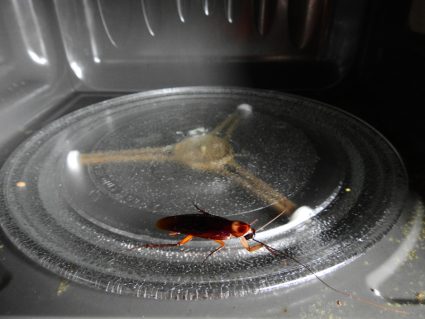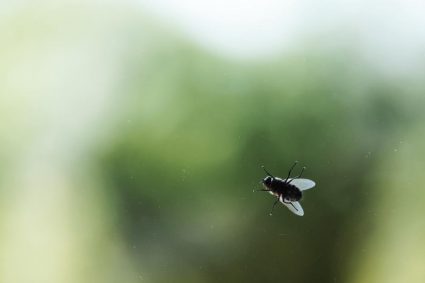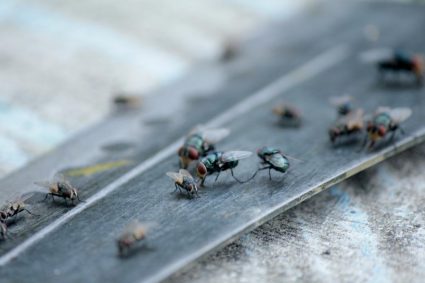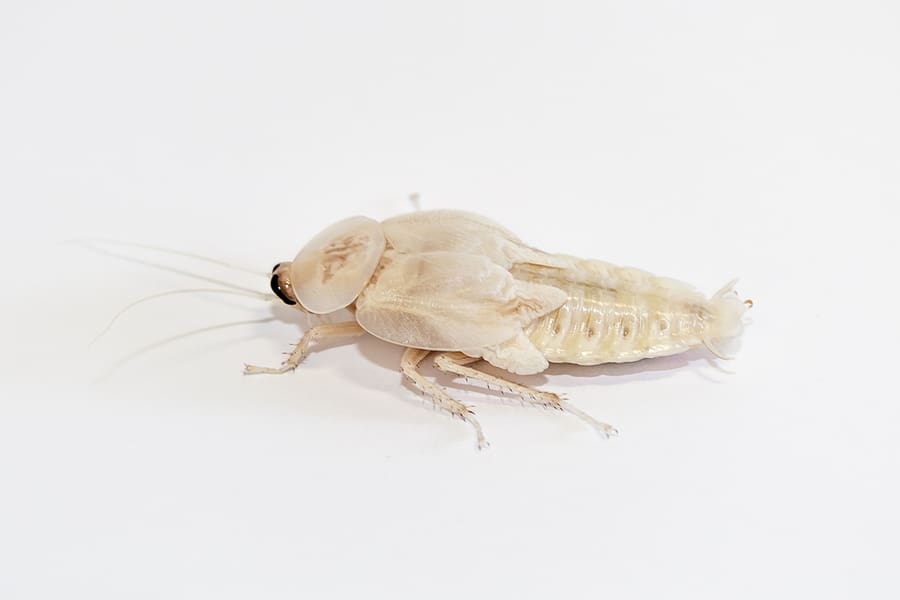
Spotting a roach in your house is scary. But it is more startling if it is white instead of a regular brown shade. However, there’s nothing weird about these plain-colored roaches, as all roaches turn white at some point.
Before becoming full-grown, roaches must undergo different development stages, one of which is molting, which turns their skin white.
In this guide, we consider what molting is and explain everything there is to know about white roaches.
Every roach begins its lifecycle looking white. The reason is that roaches do not have red blood cells at the beginning stage of their growth. Thus, their inner body lacks color at this stage. This makes them appear white or transparent to the human eye.
Below are our keynote discoveries about white roaches:
- White roaches may seem more intimidating because they have a different color from other roaches. However, this does not mean that they are dangerous.
- White roaches know how to hide. So, if you spot a couple of them, they could be more than you expect, signaling a likely infestation.
- Generally, it is easier to kill white roaches than their brown counterparts. The reason is that adult roaches have a hard, brown exterior that shields them from harm.
This is only a summary. Read on for more insightful details about these creatures.
In the following headings, we will examine all there is to know about white roaches. We will answer several puzzling questions like, “why do roaches turn white?” “are white roaches harmless?” “are white roaches easier to eliminate?” Let’s get right in!
Why Do Roaches Turn White?

Starter roaches do not “turn” white. Instead, they begin their lifecycle looking white. The reason is that roaches do not have red blood cells at the beginning stage of their growth.
For this reason, their inner body lacks color at this stage, making them look white or transparent to the human eye. Roaches undergo a transformation stage called molting between this white stage and when they get their tanned brown shade.
Molting refers to the process where roaches shed their old shell as they grow. Then, they develop new ones to match their current size.
This procedure is common with arthropods, animals with segmented bodies, no spine, and a hard exterior. Roaches depend on their hardened exoskeletons to move around since they don’t have bones.
However, due to their hardened nature, these exoskeletons do not expand to fit the roach’s growing size. As such, these crawling creatures must molt several times before reaching their final form.
What Does Molting Look Like?

When roaches molt, they typically break their exoskeleton in half and crawl from underneath it. Although they grow a new one immediately, it is not yet mature to serve its purpose.
At this point, the new exoskeleton is soft and lacing in color, which makes roaches look white for the time being. But as time progresses, it begins to harden and grow darker.
This process can take minutes or hours, depending on the particular roach specie. Roaches are most vulnerable while molting because they lack a protective covering and can’t run from predators.
As a result, they stay hidden throughout that time. You may only spot their shed skin in roach-hiding spots like behind shelves and appliances. The fact that they hide away while molting is why seeing a white roach can be a rare experience.
Are White Roaches Harmless?

White roaches may seem more intimidating because they have a different color from other roaches. However, this does not mean that they are dangerous.
At this stage of their development, white roaches are not known to bite or sting. But like full-grown roaches, they can harbor diseases.
The exoskeletons and egg cases that they shed can also trigger asthma and some allergy symptoms.
So, spotting a white roach is not a good sign and requires urgent attention.
What Does It Mean To Spot White Roaches?
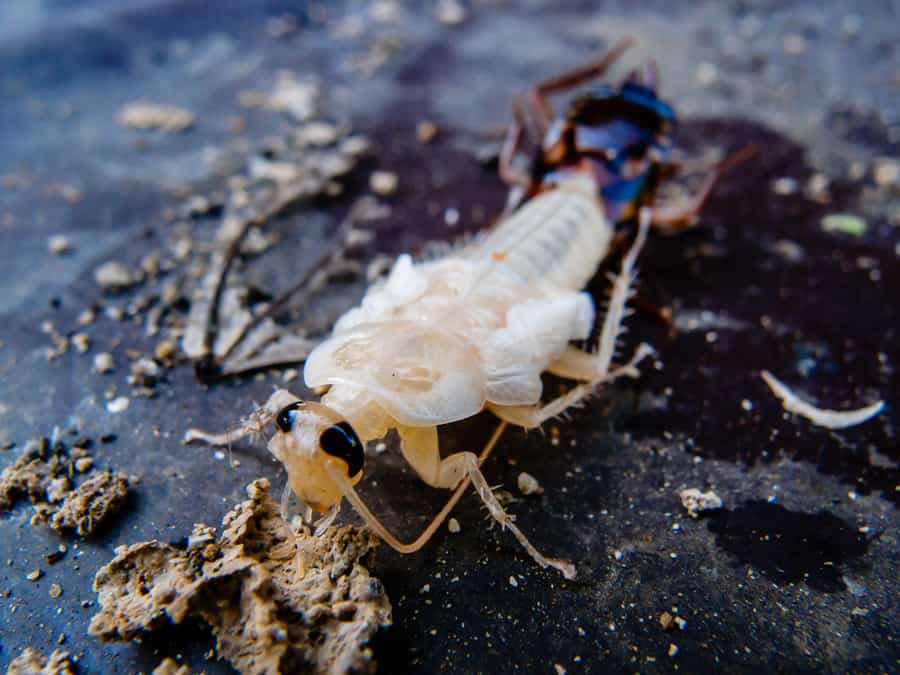
Understand this — white roaches know how to hide. So, if you spot a couple of them, they could be more than you expect, signaling a likely infestation.
Roaches tend to move in groups, and with many roaches in your house, there is a heightened risk of diseases. Their faces, urine, and other body matter often carry the salmonella bacteria that causes typhoid, diarrhea, and food poisoning.
Their shed skins and egg casings can also make your house seem untidy, causing embarrassment when you have visitors.
When Do White Roaches Become Visible?
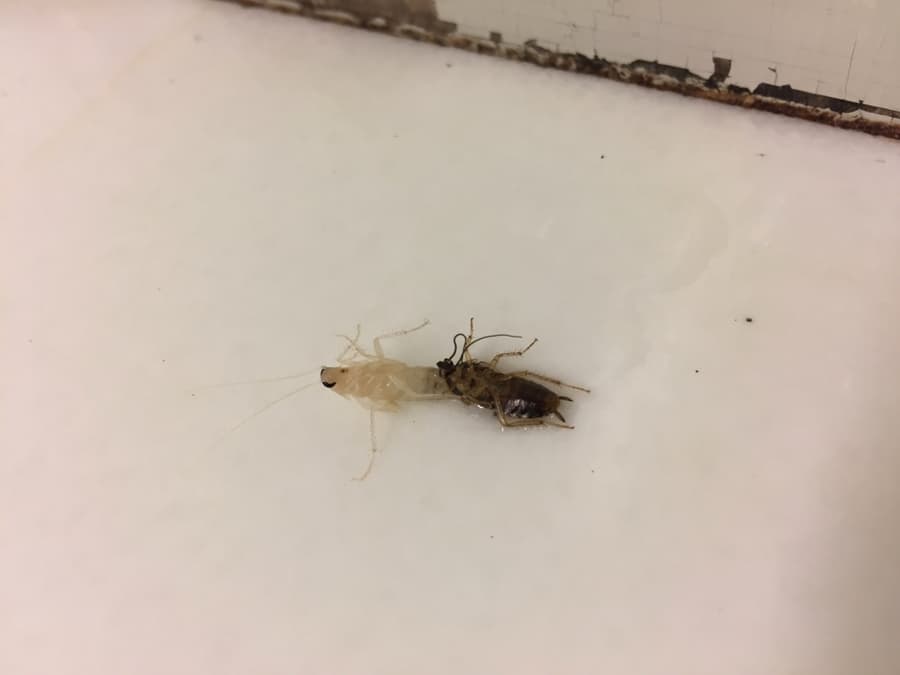
During their molting stage, roaches prefer to remain in warm, dark spaces with plenty of food access. They typically live in group nests where they molt, eat, lay eggs, and sleep together.
However, their colony can quickly outgrow the nest as they reproduce, making the space uncomfortable. Their growing number also indicates that formerly abundant resources will now become scarce.
As such, the stronger roaches may prey on the weaker ones and eat or kick them out of the nest. So, for a white roach to become visible, it is running away from the danger within the colony.
All these points show one thing — spotting white roaches is a cause for concern.
Are White Roaches Easier To Eliminate?
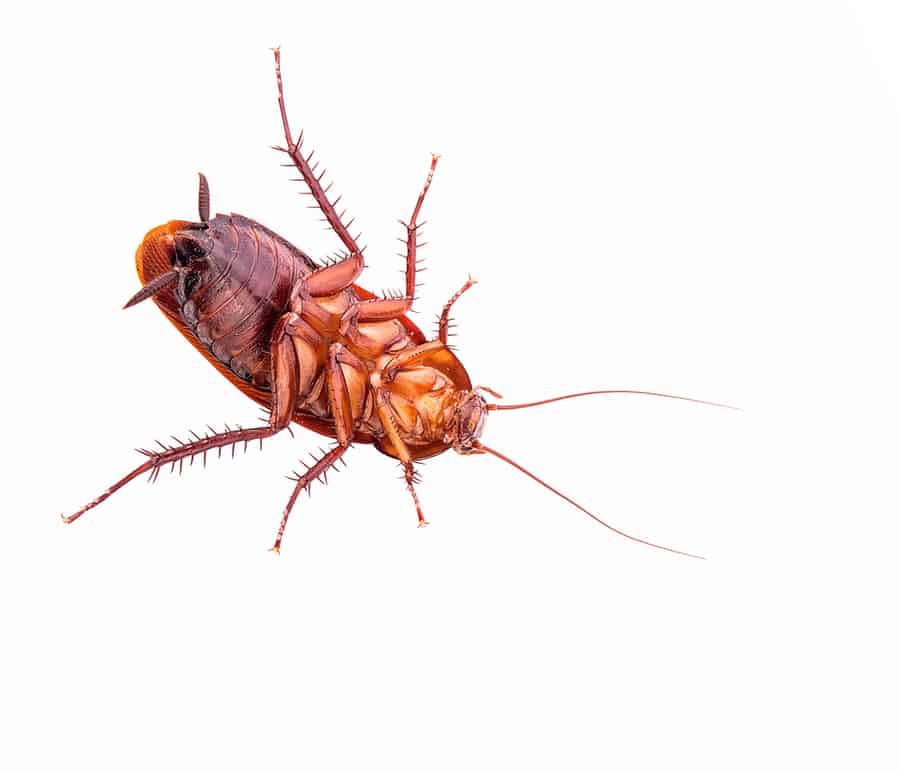
Generally, it is easier to kill white roaches than their brown counterparts. The reason is that adult roaches have a hard, brown exterior that shields them from harm.
This exterior often serves as a barrier, protecting them from harmful insecticides and being squished by human feet.
White roaches do not have this luck, as the lack of protective covering keeps them exposed and vulnerable. For example, consider the effect of insecticides on them.
Insecticides release some strong chemicals that can jam the neurotransmitters of roaches. This causes them to develop uncontrollable muscle spasms and flip over, with their bellies facing upwards. As they struggle to turn around and fail, they get weak and die of starvation.
But for adult roaches, the case is different. Although most insecticides are powerful, they do not work on all roaches. Some adult roaches can withstand these chemicals because their exoskeletons prevent them from entering their internal organs.
While some, caught unawares, may die, others can luckily escape. On the other hand, white roaches have not developed this thicker exterior. As such, they will quickly absorb the poison, lose bodily functions, and die.
Conclusion
Finding white roaches in your house is a clear sign of danger. The best way to repel them is to clean your home, as unsanitary environments are roach playgrounds.
Insecticide sprays and DIY bug repellants may also work against these roaches. However, white roaches are evasive, and trying to kill them may be difficult.
In that case, contact your local pest control experts. They have the knowledge to help you locate and eliminate these white pests.
Frequently Asked Questions
Are White Roaches the Same As Albino Roaches?
Albino animals have a genetic condition preventing them from getting darker. White roaches do not fall into this category, as they do not retain their white color for long.
What Color Is Roach Blood?
Roaches lack hemoglobin, a protein component of red blood cells. As such, their blood appears white, unlike human blood, which is red from its high hemoglobin content.

